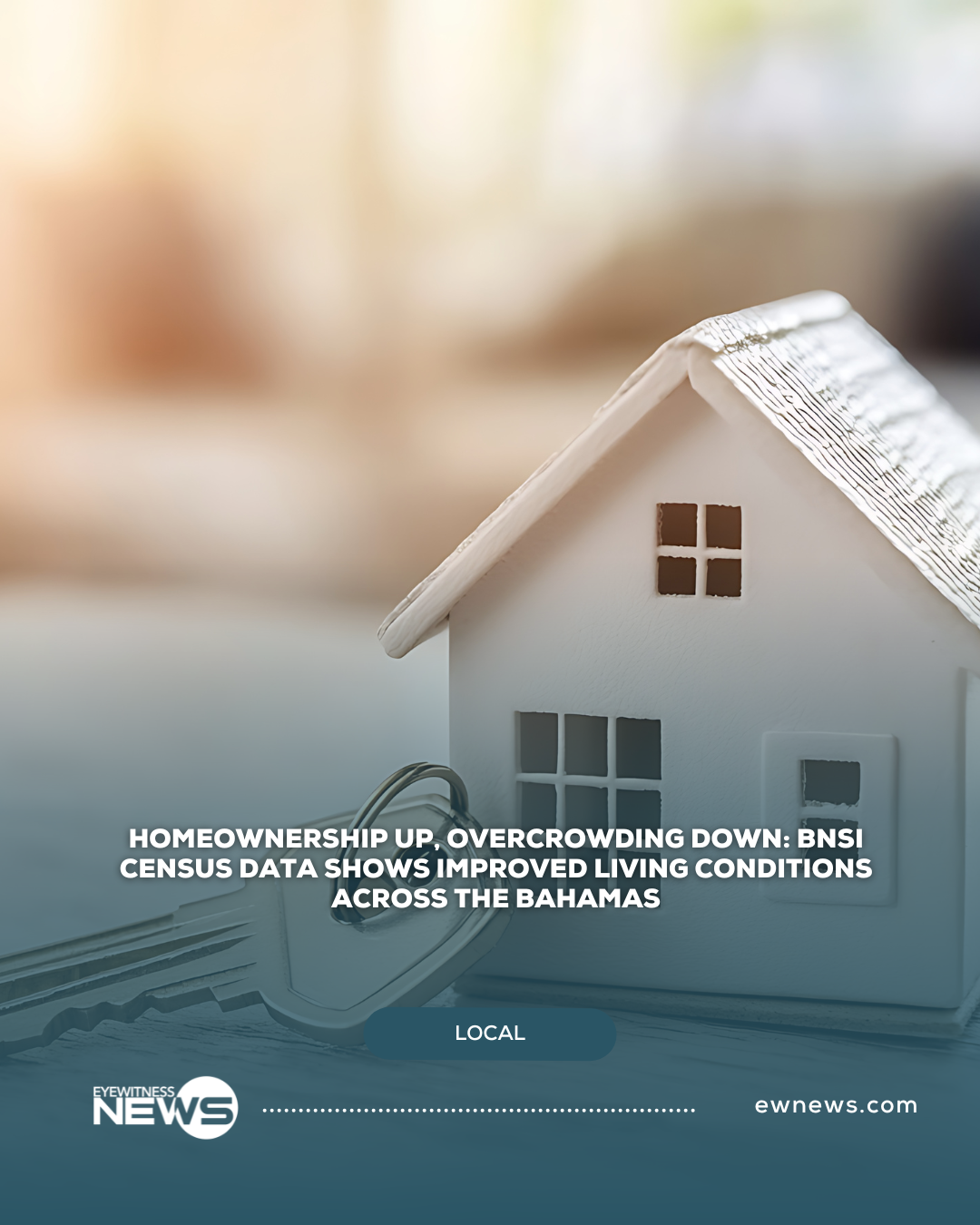NASSAU, BAHAMAS- The Bahamas National Statistical Institute (BNSI) has reported broad improvements in housing conditions, utilities access, and homeownership nationwide, based on data revealed in the 2022 Housing Census.
The data reveal notable gains in living standards over the past decade, with more Bahamians owning their homes, fewer households experiencing overcrowding, and near-universal access to electricity, safe water, and sanitation.
The census recorded 144,198 dwelling units across The Bahamas in 2022, marking a 14 percent increase from 2010. Of these, 82.6 percent (119,138) were occupied and 17.4 percent (25,060) were vacant. New Providence, Grand Bahama, and Eleuthera accounted for more than 62 percent of all vacant units.
While New Providence remains the dominant housing market, its share of private dwellings fell slightly from 68.3 percent in 2010 to 66.9 percent in 2022, while the Family Islands saw growth from 12 to 13 percent, reflecting gradual population and investment shifts.
The 2022 census shows The Bahamas has achieved near-universal access to basic utilities and sanitation services. Nearly all households—97.4 percent (116,025)—reported using electricity as their main source of lighting, while over 91 percent received water through either public (61) or private (30) piping systems.
Sanitation standards have also improved, with 97 percent (115,576) of dwellings equipped with flush toilets connected to private or public systems. These figures represent modest but steady gains since 2010, underscoring the country’s progress in infrastructure and quality of life.
Digital access has surged over the past decade, with 92.3 percent of Bahamians aged three years and older reporting internet use in 2022—up from 64.7 percent in 2010. The Census found the highest usage rates among young people aged 10 to 24, while the lowest levels were recorded among those over 65.
Most residents—82.1 percent—access the internet at home, followed by 12.4 percent via mobile devices. The data underscore the rapid digital transformation of Bahamian households and the growing role of technology in everyday life.
Household overcrowding declined notably between 2010 and 2022. Nationally, just 1.4 percent of households were classified as overcrowded in 2022, down from 2.4 percent twelve years earlier.
New Providence (1.6) and Abaco (1.5) recorded the highest rates of overcrowding, while Grand Bahama (0.7) and the other Family Islands (1.0) had the lowest. The data also show a decrease in average household size—from 3.4 persons per home in 2010 to 3.3 in 2022—alongside a rise in the average number of rooms per dwelling.
About two-thirds of homes had two or three bedrooms, and more than three in five households had three occupants or fewer, indicating broader living space per person.
The number of homes owned by occupants grew significantly, from 60,543 in 2010 to 71,990 in 2022, a 19 percent increase in homeownership. Fully owned properties—with no mortgage—rose sharply from 37,109 to 52,691, now representing 44.2 percent of all private dwellings.
By contrast, homes under mortgage declined from 23,434 (22.8 percent) to 19,299 (16.2 percent), while rental occupancy grew modestly from 35,844 to 40,060.
Island-level analysis shows homeownership exceeding 70 percent on ten islands. Ragged Island recorded the highest rate at 92.9 percent, followed by Acklins (87.1), Mayaguana (83.2), and Cat Island (81.3).
The census also noted upward trends in household income levels. One-quarter (25 percent) of households reported annual incomes between $20,001 and $40,000, slightly below 2010 levels. However, the share of households earning above that range increased, while those earning less than $10,000 declined, suggesting gradual income growth across the population.
Male-headed households reported higher average annual incomes than female-headed ones, with men accounting for 58.8 percent of all household heads.






